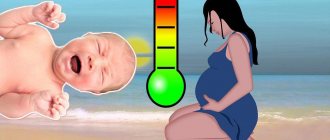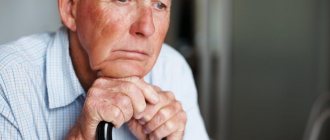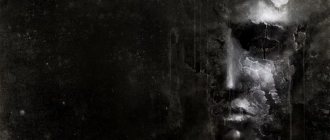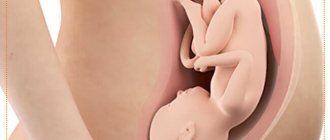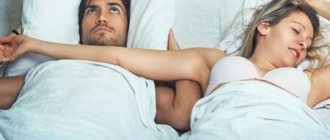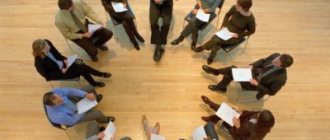What is dyssomnia?
Dissomnia (dis + Greek somnos - sleep), the same as insomnia, is one of the sleep disorders, in other words, insomnia. It is characterized by difficulties and disturbances in falling asleep, the quality of sleep itself is superficial, intermittent, and early awakening. The ICD-10 code for dyssomnia is F51.0 G47.0.
The clinical symptom is characterized by a reduction in the duration of night rest, a lack of freshness and vigor after waking up, and drowsiness is also observed during the day. Dyssomnia occurs in both adults and children.
The causes of the disorder are the following:
- taking certain medications;
- sleep disturbance;
- poor conditions for falling asleep;
- pathological processes in the body;
- time zone changes while traveling;
- night shift work;
- elderly age.
Changing sleep patterns is not always considered a pathology. Creative inspiration, changes in the environment, and the emergence of situations that require increased performance cause quite logical anxiety. As a result, sleep dynamics change. This deviation is called compensatory; it is not pathological.
Confusion after sleep
Confusion after waking up is one of the symptoms of parasomnia in children. This manifestation most often occurs before the age of 5 years.
This disorder is very frightening for parents, because the child’s behavior looks very strange and unusual. Immediately after waking up, the baby exhibits the following pathological signs:
- detached facial expression;
- lack of response to parents' requests;
- unclear and slow speech;
- answers to questions inappropriately;
- inadequate arousal;
- disorientation in space.
Parents have the feeling that the child has opened his eyes, but still continues to remain in the dream world. All attempts to calm the baby only worsen the situation. At this moment, the child’s nervous system is partially in the sleep phase. This state lasts 5-25 minutes. It does not pose any particular danger to the baby. Episodes of confusion usually resolve after age 5 years.
Types of dissomnia disorders
The following types of dissomnia disorders are distinguished:
- Endogenous – disorders that are caused by internal reasons. This group includes psychophysiological sleep disorders, idiopathic insomnia, narcolepsy, post-traumatic hypersomnia.
- Exogenous – disorders associated with external causes. This includes disorders that are caused by taking medications, alcohol, or violating the regime.
- Circadian – disruption of the circadian rhythm.
Depending on the duration, there are episodic (7-10 days), short-term (up to 3 weeks), chronic (more than a month).
Often there is a combined form of disorders - a combination of dyssomnia and parasomnia (behavioral disorder during sleep).
Establishing diagnosis
The diagnosis of “dyssomnia syndrome” occurs taking into account complaints and a full examination, which includes:
- taking anamnesis;
- analysis of sleep diary entries;
- physical diagnostic measures;
- laboratory tests (in some cases).
If indicated, polysomnography is performed. During the procedure, respiratory vibrations of the abdominal wall and lungs are examined in a sleeping patient, the concentration of oxygen in the blood, EMG, ECG, EEG, and EOG are determined. Based on the obtained indicators, a hypnogram is compiled.
Need for sleep
Depending on age, sleep needs vary:
- a newborn should sleep about 12-18 hours;
- A child's sleep requirement up to one year is about 15 hours;
- children from 1 to 3 years old sleep 12-14 hours;
- in preschool age, the time required for sleep decreases to 11-13 hours;
- at school age it is 10-11 hours;
- for teenagers 8-9 hours.
The youngest children initially have difficulty transitioning between sleep stages, which is why they wake up so often.
Night terrors
Typically, night terrors occur in children in the first few hours after falling asleep. This disorder is most often observed at the age of 2-6 years. Boys are more susceptible to this disorder.
During a night terror, the child makes sudden movements and wakes up. He appears extremely agitated and constantly cries and screams. All attempts to calm him down end in failure. Children in this condition may act aggressively or harm themselves. They are disoriented and do not respond to their parents' words.
This condition is accompanied by severe autonomic symptoms: nausea, vomiting, tachycardia, and increased sweating. The episode lasts from 15 to 40 minutes. Then the child falls asleep again, and the next morning he does not remember anything.
Dyssomnia in adults and children: what it is, causes, types, diagnosis and treatment methods
Dyssomnias are disturbances in the quality, duration and relationship of sleep phases of various etiologies. The pathology can be caused by both external factors (stress, medication use) and diseases of the central nervous system and internal organs.
Let's take a closer look at what dyssomnia is and how it manifests itself in adults and children. The condition requires serious attention, as it is fraught with loss of ability to concentrate, chronic fatigue, memory impairment, decreased immunity and other complications.
Possible consequences
Sleep has many functions that are important for the full recovery and functioning of the body. It helps to consolidate the material being studied, retain information in memory, regenerate cells, maintain the body's defenses, normalize hormonal levels and stabilize the emotional and mental state.
Violations of the rest-wake cycle, duration and phase relationship can lead to the following complications:
- deterioration of immunity;
- development of chronic fatigue syndrome;
- depression;
- decreased stress resistance;
- loss of performance and ability to concentrate;
- deterioration of memory and intelligence;
- impaired glucose tolerance, development of type 2 diabetes;
- increased risk of cancer and cardiovascular diseases;
- loss of muscle mass and increased risk of obesity;
- hormonal imbalances associated with impaired androgen production.
Short description
Insomnia is a subjective feeling of insufficient sleep, including presomnic (delayed sleep onset), intrasomnic (impaired duration and depth of sleep) and post-somnic (impaired speed and time of awakening) disorders or a combination thereof.
Frequency. Over the course of their lifetime, up to 30% of the adult population suffers from insomnia. More often occurs in old age. Complaints about sleep disturbances are the most frequently presented complaints when initially visiting a doctor.
Classification • By duration: •• Short-term insomnia •• Chronic insomnia • By etiology •• Primary sleep disorders •• Secondary sleep disorders caused by traumatic situations, mental disorders, somatic and neurological diseases or the use of psychoactive substances.
Etiology • Psychotraumatic situations • Somatic and neurological diseases that cause physical discomfort and are accompanied by pain • Mental illnesses, especially accompanied by depressive states • Substance abuse (alcohol, caffeine, nicotine, psychostimulants, narcotic substances), drugs (dietary supplements, decongestants and antitussives, GC, theophylline, phenytoin) and the resulting withdrawal symptoms • Heavy smoking • Obstructive sleep apnea syndrome • Disturbance of the rhythm of sleep and wakefulness (rapid jet lag, night shift work, damage to the hypothalamus due to head injury or encephalitis).
Diagnostics
In case of sleep disorders, it is necessary to undergo an examination and consultation with various specialists: a pediatrician, a child neurologist and a psychiatrist. After all, manifestations of nocturnal parasomnia are often similar to symptoms of organic diseases.
The doctor conducts a survey of the child’s parents to identify the frequency and nature of sleep disorders, the duration of the episodes, as well as hereditary predisposition. Parents are advised to monitor their child’s behavior during sleep and record any disorders in a special diary.
To determine the nature of parasomnia, polysomnography is prescribed. This test is carried out while the child is sleeping. Using a special device, brain activity, muscle tension and breathing are recorded during sleep.
It is very important to distinguish the manifestations of parasomnia from epilepsy and other organic pathologies of the central nervous system. For this purpose, an electroencephalogram, MRI of the brain and Dopplerography of the vessels of the head are prescribed.
If a child suffers from nocturnal enuresis, then it is necessary to examine the function of the kidneys and bladder to exclude urological diseases.
Symptoms (signs)
Clinical picture • Feeling of insufficient sleep • Presomnia disorders - inability to fall asleep at the patient’s usual time, often accompanied by anxiety, fear and obsessive thoughts • Intrasomnia disorders - superficial anxious sleep with frequent awakenings • Postsomnia disorders - when falling asleep satisfactorily, the patient wakes up several hours earlier than usual and then either cannot fall back to sleep or falls into a restless, unsatisfying sleep. Often observed in the elderly and in depression • Lack of recuperation after sleep • Drowsiness and drowsiness during the day • Fatigue • Anxiety before bedtime.
Treatment • Nonspecific ways to improve sleep: •• Elimination of etiological factors of insomnia: pain syndrome, taking drugs that cause sleep disorders, depression •• It is recommended to wake up at the same time every day •• It is necessary to limit the duration of daily stay in bed to the time usual for patient before the onset of a sleep disorder •• Substances that affect the central nervous system (caffeine, nicotine, alcohol, stimulants) should not be consumed •• Alcohol intake should be avoided after 5 pm or less than 6 hours before bedtime •• Sleep is not recommended during the day (unless naps improve sleep at night) •• Use a progressive exercise program in the morning to maintain well-being •• Avoid agitation before bed; replace watching TV with light reading or listening to radio programs •• It is recommended to take a hot bath for 20 minutes before bed to raise body temperature •• It is necessary to regularly eat at a certain time, avoid eating a large meal before bed (sometimes a light snack before going to bed can help you fall asleep sleep) •• In the evenings, it is useful to use relaxation or meditation techniques •• Creating comfortable conditions for sleep • Psychotherapy • Drug therapy (indicated when non-specific methods and psychotherapy are ineffective) •• For sleep disorders associated with pain - NSAIDs, for example acetylsalicylic acid 325–650 mg at night •• For sleep disorders associated with emotional disorders, for persistent insomnia, as well as for sleep disorders that worsen the patient’s well-being, benzodiazepine derivatives are recommended •• Nitrazepam - 5–18 mg 30–60 minutes before bedtime • • Bromodihydrochlorophenylbenzodiazepine - 0.5-2 mg at night •• Triazolam - 0.125-0.25 mg at bedtime. In small doses, it is recommended for acute sleep disturbance, for example, when traveling with a change in time zone or when switching to night work •• Temazepam - 15 mg 1-2 hours before bedtime •• Flurazepam - 15-30 mg at night •• New non-benzodiazepines drugs: zolpidem - 10 mg or 5 mg (elderly or debilitated patients) •• For sleep disorders associated with depression - amitriptyline 1 hour before bedtime (initial dose - 50-100 mg) •• Alternative drug - chloral hydrate 0. 5–1 g at night.
Therapy
To successfully treat parasomnia, it is necessary to normalize your daily routine. In the second half of the day, the child should be given only light food. Sleep should be at least 9-10 hours at night, and about 1-2 hours during the day. Children with sleep disorders need high physical activity in the morning and afternoon, and quiet time in the evenings.
Using diary entries, you can track: at what time your child most often experiences sleep disturbances. Doctors recommend waking up the child 10-15 minutes before the expected episode of parasomnia, and then putting him back to sleep. This is especially necessary for nocturnal enuresis.
Behavioral correction is also used. The child needs to visit a child psychotherapist. The doctor will conduct classes with the child or teenager aimed at relieving emotional stress. At home, parents can use special evening rituals. This could be a relaxing bath, drinking tea made from soothing herbs, or slow-paced gymnastics. Such activities enhance inhibition processes in the central nervous system before bedtime.
In many cases, drug treatment for parasomnia in children is necessary. Typically, a child is prescribed plant-based sedatives:
- "Persen";
- valerian extract (tablets);
- herbal remedies with mint or motherwort.
Tranquilizers are prescribed to children extremely rarely. The body quickly gets used to such medications. For severe sleep disorders, the drugs Phenibut and Phezam are used. They are not classic tranquilizers, but are nootropic drugs with an additional sedative effect. These are prescription drugs that can only be given to a child on the recommendation of a doctor.
Physiotherapeutic methods for treating parasomnia in children are also used: electric sleep, massage, baths with decoctions of sedative herbs. It is especially useful to carry out such procedures in the afternoon.
Classification
Today there are 4 groups of dissomnia disorders:
- Changes in sleep duration and stage of falling asleep. This condition is called insomnia
- Disruption of the sleep-wake cycle with prolonged periods of daytime sleep
- Increased sleep duration – hypersomnia
- Sleep and awakening disorder - parasomnia
Depending on the duration of periods of sleep disturbance, dyssomnia is divided into:
- Episodic (no more than one week)
- Short-term (1-3 weeks)
- Chronic (from a month)
An episodic or short-term group often appears as a result of a side effect from taking medications, with a pronounced stimulating effect (phenotropil, etc.).
Your psychologist
It is believed that the initial forms of sleep disorders are caused by disturbances in the regulation of the sleep-wake mechanism and non-compliance with sleep patterns. These forms of disorders are the opposite of sleep problems that are associated with physical or mental disorders or medications. The reference edition of DSM-IV-TR divides the initial forms of disorders into two main categories: dyssomnias and parasomnias (APA, 2000). Dissomnias- a category of sleep disorders associated with falling asleep or sudden awakenings.
Such disorders are often characterized by lack of sleep, insomnia, and a feeling of exhaustion after sleep. In Parasomnias
, on the contrary, behavioral and physiological “events” occur during sleep. While dyssomnia is characterized by disturbances in the sleep process, parasomnias involve physiological or cognitive “awakening” at inappropriate times in the sleep-wake cycle. Therefore, people suffering from this disorder often complain of unusual behavior, such as sleepwalking or nightmares that completely deprive them of sleep.
The DSM-IV-TR criteria do not fully correspond to sleep disorders in children, since these disorders are transient (Anders & Eiben,). Instead of special criteria for children, refer to the table. 12.1 and 12.2 to help you understand the characteristics of various sleep disorders and the differences between them.
Table 12.1. Dissomnias
Sleep disorder
| Description | Distribution and age | Treatment | |
| Protodissomnia | Difficulty falling or staying asleep; sleep does not restore strength; Children have repeated awakenings at night and difficulty falling asleep | 25-50% of children from 1 to 3 years old | Behavioral treatment, family leadership |
| Hypersomnia | Complaints of increased sleepiness, which manifests itself either in prolonged sleep at night or in episodes of daytime sleep | Common in young children | Behavioral treatment, family leadership |
| Narcolepsy | Irresistible bouts of refreshing sleep during the day, followed by brief moments of decreased muscle tone | More than 1% of children and adolescents | Device, support, psychostimulants, antidepressants |
| Sleep disorders associated with breathing | Sleep disorders that result in excessive sleepiness, or insomnia, which are caused by sleep-related breathing difficulties | 1-2% of children of preschool and primary school age | Removal of tonsils and adenoids |
| Circadian rhythm sleep disorder | Ongoing or intermittent sleep disturbances that result in increased sleepiness or insomnia due to a mismatch between the sleep-wake schedule required by circumstances and the individual's internal sleep cycle (circadian rhythm): late going to bed (after midnight), difficulty waking up in the morning, sleeping in on weekends, resistance to changes in routine | Unknown exactly, approximately 7% of adolescents | Behavioral treatment, chronotherapy |
Table 12.2 .
Parasomnias
| Sleep disorders | Description | Distribution and age | Treatment |
| Rapid eye movement sleep phase parasomnias | |||
| Nightmares | Repeated awakenings with detailed memories of prolonged and extremely frightening dreams, usually threatening life, safety and self-esteem | Common between 3 and 6 years of age | Providing peace, reducing stress |
| Parasomnias associated with excitement | |||
| Night terrors | Multiple sudden awakenings, usually during the first third of the main sleep cycle, starting with a panicked cry; arousal of the autonomic nervous system, palpitations, sweating, loss of voice, glassy eyes, difficulty waking up, inconsolability, disorientation, lack of memory of dreams in the morning | 3% of children aged 18 months to 6 years | Reduced stress and fatigue, extra late afternoon naps |
| Sleepwalking | Repeatedly getting out of bed at night and walking around the room for 5 seconds to 30 minutes, usually during the first third of the main sleep cycle; poor coordination, difficulty waking up, disorientation; in the morning there are no memories | 15% of children experience one seizure; 1-6% from 1 to 4 attacks per week; age 4-12 years, rarely occurs in adolescence | Ensuring safety, reducing stress and fatigue, additional late afternoon naps |
Please note two notes regarding the diagnostic criteria: in addition to the symptoms characteristic of each of the sleep disorders listed in Table. 12.1 and 12.2, DSM diagnostic criteria for all sleep disorders include the following:
1) the presence of a clinically significant impairment or deterioration in the individual’s functioning in social, professional or any other important area;
2) the requirement that the sleep disorder cannot be explained by another mental disorder, direct physiological effects of a substance, or a general physical condition (other than a breathing sleep disorder) (APA, 2000).
These criteria are considered for all disorders discussed in this chapter.
Dissomnias.
Many forms of dyssomnia are quite common during certain periods of development and represent disturbances in the amount, timing and quality of sleep. Anita, for example, suffered from a common childhood form of insomnia, which involves difficulty falling asleep. Fortunately, most of these problems resolve themselves as the child gets older, especially if parents are familiar with the basic rules, namely, not yelling at children in the evening and strictly adhering to the child's sleep schedule (Blader et al., 1997).
Table 12.1 contains a list of childhood dyssomnias. Most forms of dyssomnia are childhood diseases. The exception is narcolepsy, which is quite rare and mainly affects adolescents and adults. Breathing-related sleep disorders are less common than other dyssomnias and can affect children of any age as a result of allergies, asthma, tonsillitis and inflammation of the adenoids, which cause breathing problems. Although dyssomnias are quite common, they can significantly affect the behavior and emotional state of children, much more than adults.
Protodissomnia and hypersomnia.
These two sleep-related problems lead to difficulty staying asleep and sleeping too much.
The term Protodyssomnia
is used to distinguish the above sleep problems in children from primary insomnia, which is mainly characteristic of adults (Anders & Eiben, 1997).
Infants and toddlers have trouble falling and staying asleep (protodissomnia), while preschoolers sometimes have difficulty staying awake (hypersomnia). Usually such problems resolve themselves, but intervention is useful for those families who are experiencing situational stress or where parents are not familiar with the norms of child development.
Primary signs of Hypersomnia
Children experience increased sleepiness during the day and increased sleep time at night. These problems become noticeable when the child goes to school. Children may struggle to stay awake, but it is actually possible to indulge in short moments of rest called microsleep. These unnoticeable short periods of sleep occur in low-activity environments, such as in class or while watching TV (sound familiar?). During microsleep, a person’s eyes are wide open, but their gaze is glassy and unseeing. A child may even answer a simple question (“Did you do your math, Freddie?”) with a very brief “yes,” but more complex answers may be incoherent and irrelevant (“Saw your homework last night, did your math on TV”). It is clear that the amount of information that a child can receive at such a moment is zero. In addition, children with excessive daytime sleepiness may be misdiagnosed as attention-deficit hyperactivity disorder or developmental disorder due to decreased learning and performance (Mindell et al, 1999).
Both sleep disorders discussed appear to be approximately equal in girls and boys, as well as in representatives of different social classes (Anders & Eiben, 1997). Protodissomnia is often caused by conditions that can usually disrupt or worsen sleep - ear infections, colds or toothaches, so parents understand why their child is drowsy or nervous.
The source of hypersomnia in children may be sleep disturbances and insufficiency (Carskadon, Wolfson, Acebo, Tzischinsky, & Seifer, 1998). Sleep problems in infants and young children may become significantly worse by the time children reach preschool age or enter school (Zuckerman, Stevenson, & Bailey, 1987), but there is no evidence whether these early forms of sleep disorder lead to dyssomnias. in later life (Anders & Eiben, 1997).
Narcolepsy.
Narcolepsy is a form of dyssomnia in which rapid eye movement sleep attacks occur while awake, lasting 10-20 minutes, and sometimes up to 1 hour if the person is not awakened. Instead of moving through the 4 stages of non-rapid eye movement sleep to rapid eye movement sleep, people with narcolepsy quickly move into a form of dreaming sleep, almost straight from the waking state (remember that during rapid eye movement sleep, the brain is active, but the body is not). A person begins to dream, and some are simply in a familiar environment - sitting behind the wheel, talking, attending class in a state of partial consciousness. After each attack, the person feels rested, but drowsiness reappears after 2-3 hours. An interesting example of narcolepsy is the following case:
Mario: Constantly wants to sleep.
The mother of 7-year-old Mario contacted the sleep disorder center with complaints about her son’s increased sleepiness during the day and his ability to fall asleep in almost any environment, despite 10 hours of sleep at night and two daytime bedtimes (one hour and one and a half hours). It was also noted that when laughing or excited, Mario would suddenly become weak and sometimes fall, although he never lost consciousness. The boy himself claimed that at night in the bedroom he sees people’s faces, and during such episodes he cannot move.
Mario's past medical history was unremarkable, with the exception of chicken pox and a tonsillectomy at age 6. There was also no history of serious physical illness in the family.
True, her mother claimed that she, too, often fell asleep during the day when she was not busy with anything, and lost her balance when laughing. After assessing Mario's daytime and nighttime sleep patterns, narcolepsy was identified and treatment was prescribed. After a week, the boy's muscle weakness disappeared, he became more alert, and it became easier for him to get up in the morning for school. A few months later, the mother tried to stop the medication, but had to go back on it because the symptoms returned (adapted from Wittig , Zorick , Roehrs , Sicklesteel & Roth , 1983).
Mario demonstrated several of the core symptoms of narcolepsy. First, he had recurring, overwhelming sleep attacks that seemed to make him feel rested for short periods of time. Secondly, Mario experienced sudden weakness due to weakening muscle tone, and he sometimes fell, but never lost consciousness. Muscle weakness can be mild, such as a sagging jaw or heavy eyelids, or more severe, such as Mario falling. This weakness is usually caused by some strong emotion, such as anger or laughter. Thirdly, Mario claimed that at night in the bedroom he sees people’s faces and at the same time cannot move.
These symptoms serve as signs of rapid eye movement sleep intrusion during the transition from sleep to wakefulness. Most children report these symptoms from time to time, but if the symptoms recur, it may indicate two characteristic features of narcolepsy that are associated with rapid eye movement sleep intrusion, namely sleep paralysis and hypnagogic hallucinations. Sleep paralysis occurs at the beginning or end of sleep and entails a short period when the child is unable to move or speak. You can imagine how frightening such moments are. Hypnagogic hallucinations are just as frightening.
- deep, dream-like images that are extremely realistic, since a person weaves into them elements of his real environment, something like virtual reality. Sometimes children, like Mario, not only see a face, but also believe that the “dream man” is moving and speaking from a picture on the wall or tugging at their pajamas. Do these phenomena explain the real and terrifying accounts of people who claim to have been abducted by aliens (Spanos, Cross, Dickson, & DuBreuil, 1993)?
Narcolepsy is rare in children and adolescents, affecting only 4-7 people in 10,000. It usually occurs in late adolescence and early adulthood (Anders & Eiben, 1997). However, it is known that symptoms of narcolepsy co-occur with childhood depression and behavioral problems and may go undetected (Guilleminault & Pelayo, 1998).
Narcolepsy is an inherited neurological disorder that affects a person's ability to enter and exit rapid eye movement sleep (Dahl, Holttum, & Trubnick, 1994). Skeletal muscles relax during rapid eye movement sleep, which prevents the individual from injuring himself or a neighbor sleeping next to him during overstimulating dreams. In some ways, hypnagogic hallucinations are similar to normal rapid eye movement dream images; the difference is that people with narcolepsy experience these symptoms before they are completely asleep. To put it simply, narcolepsy is a disorder of rapid eye movement sleep physiology; such sleep corresponds to a particular time of the night, but it may occur at the wrong time in the wrong place (Dahl et al, 1994).
Sleep disorders associated with breathing.
Some children have trouble sleeping simply because their breathing is disrupted.
We've all experienced temporary or partial sleep disturbances during a bad cold - breathing is blocked and we wake up again and again to regain it. Some children and adults experience these problems on a regular basis due to physical disorders. If breathing stops completely for a period of 10 seconds to 2 minutes, the person is said to have Dyspnoea Sleep Disorder,
the most common form of breathing-related sleep disorder in children (Hansen & Vandenberg, 1997). Difficult sleep syndrome with shortness of breath is caused by a narrowing of the airway and obstruction of air movement. The disorder is thought to affect 1–2% of children and adults (American Sleep Disorders Association [ASDA], 1990). Difficulty sleeping with shortness of breath syndrome is characterized by loud snoring and gasping for air, followed by periods of rest that usually last 20-30 seconds. Children may become agitated or restless, wet the bed, or adopt unusual sleeping positions, such as on their elbows or knees, to help them breathe (APA, 2000). Placing a tape recorder near the sleeping baby to identify abnormal breathing patterns can help make the diagnosis. In young children, difficulty sleeping with shortness of breath most often occurs due to enlarged tonsils and adenoids, which can be removed to restore normal breathing. Because of disrupted sleep, children with difficulty sleeping with wheezing syndrome, as well as their parents and teachers, often report daytime fatigue, inattentiveness, restless and sometimes hyperactive behavior, and decreased cognitive function. For these reasons, the various symptoms associated with childhood sleep apnea may be easily confused with those of other childhood disorders such as oppositional behavior disorder and attention deficit hyperactivity disorder (Hansen & Vandenberg, 1997).
Circadian rhythm sleep disorder.
This sleep disorder in adolescents is considered common but transient and involves difficulty falling asleep at a set time and waking up on time. You can imagine that parents begin to worry when a child does not go to bed for a long time, has difficulty getting up in the morning, yawns in class and often falls asleep during the day. Teens say they can't fall asleep for one or two hours, even if they go to bed after midnight. Having fallen asleep, they sleep in the morning much longer than the appointed time.
Circadian rhythm sleep disorder is essentially a discord between the internal sleep cycle (circadian rhythm) and external opportunities and demands. Circadian rhythms are the daily patterns that govern the regularity and amount of sleep and wakefulness that indicate when a person needs to sleep, but these patterns can be disrupted by forced daily routines. Under normal conditions, these rhythms are maintained by a biological “clock” located in the hypothalamus, which is regulated by the length of daylight hours. Like other body functions, these rhythms can become irregular if we ignore or change them. Circadian cycle disturbances are common in the daily lives of adolescents, students, travelers, shift workers, and parents of newborns, and can become a chronic problem for some (Wolfson & Carskadon, 1998).
<Sudden infant death syndrome is a mysterious disorder that affects only infants and toddlers, mostly in their sleep. A child is considered at risk of sudden death if a sibling has died from the disorder, or if the child has difficulty breathing at night. Special sensors can be used to immediately alert parents if the baby stops breathing.>
Disturbances in circadian rhythms can cause significant problems. Long periods of wakefulness or persistent irregular sleep patterns can get out of control and develop into circadian rhythm sleep disorders that can last from several months to several years. Going to bed later and later becomes a persistent habit. Teens often try to catch up on sleep on the weekends, which, as noted earlier, is fine within modest limits, but can disrupt the body clock if it goes on for too long. Sometimes, a damaged biological clock can cause late sleep phase syndrome to persist even when normal sleep volume has been restored and insufficient sleep is no longer a concern (Anders & Eiben, 1997).
Parasomnias.
Imagine that you have just gone to bed after celebrating the New Year when you suddenly wake up to the terrible scream of your 3-year-old daughter Jenny. You rush to find out what happened, but she pushes you away, shouting: “Go away, go away!” When you take her out of her crib, she looks at you but doesn't seem to recognize you. Understanding her fear, you try to take your daughter in your arms to calm her down, but she kicks you in the face, scratches herself and screams in an angry voice: “Let me go!” She seems scared, but everything you try only complicates matters. The next morning, Jenny has no memory of the night terror that gripped her (this example is taken from the real life of one of the authors of this work). In early preschool, Jenny had several episodes of restless awakening, but she got rid of them as she got older.
Parasomnias most often bother young and middle-aged children, and we can add that they are somewhat easier to identify due to the more well-known timing of occurrence and personal experience. Parasomnias include nightmares
(repeated awakenings due to terrible dreams that are usually remembered),
Night
Terrors (sudden awakenings accompanied by arousal of the autonomic nervous system, but without memories) and
Sleepwalking
(a person gets out of bed and walks around the room, and the next day about it does not remember).
Nightmares are classified as rapid eye movement sleep phase parasomnias because they occur during dreaming, usually in the second half of the night's sleep. Night terrors and sleepwalking, on the other hand, are considered
arousal-related parasomnias because they occur during deep sleep in the first third of the night's sleep cycle, when a person falls so deeply asleep that they cannot wake up and do not remember anything the next morning (ASDA , 1990). Fortunately, with parasomnias, as with dissomnias, children get better with age, or sleep disturbances disappear before they become a chronic condition that interferes with everyday life. Characteristic features of sleep disorders called parasomnias are presented in table. 12.2.
Nightmares (parasomnias during rapid eye movement sleep).
Nightmares occur suddenly during rapid eye movement sleep and a person awakens from frightening or disturbing dreams. It can be assumed that the depth and frequency of nightmares often depends on stress, especially traumatic stress, as well as on incidents that caused strong emotional arousal. Nightmares usually appear in children between the ages of 3 and 6 years and affect 10-50% of children in this age group. They can be quite severe and disturb both the children themselves and those around them. Preschoolers' nightmares are associated with fear of punishment or violent death (Muris et al, 2000). One has to wonder why so many children's rhymes and stories focus on such fears? Child psychologist Bruno Bettelheim (1976) explains how such stories can help children express and cope with their fears and fantasies.
“A child loves fairy tales not for the images that he finds in them, and which confirm what is happening to him, but because, despite the anger and restless thoughts that fairy tales give rise to in him, these fairy tales always have a happy ending, what a child cannot imagine in his life” (p. 123).
Night terrors and sleep walking (arousal parasomnias).
Night terrors (like Jenny's) and sleepwalking are classified as arousal disorders because they have many things in common, namely relative lack of response to external stimuli, difficulty waking up, mental confusion or disorientation upon awakening, or retrograde amnesia ( lack of memory of the event) the next morning. Agitation disorders usually appear at a specific time, usually within the first 3 hours of sleep onset. This is the time when an individual's sleep transitions from stage IV non-rapid eye movement sleep to rapid eye movement sleep. Instead of smoothly making this normal transition to sleep with rapid eye movements, the child suddenly becomes agitated and fearful and, like Jenny, may sit up in bed screaming, staring blankly and panting.
During a night terror attack, children are inconsolable, have difficulty waking up, and when they do wake up, they may be confused and disoriented. Usually after a few minutes the children calm down, fall asleep and the next day do not remember anything about what happened. About 3% of children experience night terrors. The prevalence of this disorder may be slightly higher because not all cases are reported (Anders & Eiben, 1997).
Sleepwalking, which appears at a later age than night terrors, from ages 4 to 12, is very similar in presentation and occurs at the same transitional time in the sleep cycle. During night walking, the individual's movements are poorly coordinated, and the direction of movement has no purpose (perhaps these are tales, or at least very rare cases where wanderers are unintentionally directed towards the refrigerator). Since these awakening disorders occur during slow eye movement sleep, the person does not dream or remember anything. About 15% of children experience one episode of night walking during childhood, while 1–6% experience such episodes every week (Anders & Eiben, 1997).
Sleepwalking and night terrors are associated with excitation of the central nervous system, especially activation of the motor and autonomic nervous systems. Children may inherit this ability, as family histories of night terrors or night walking are reported by 80% of individuals seeking help for such problems (APA, 2000). Night terrors are more common in boys than in girls, but by adolescence this ratio evens out. Fortunately, agitation disorders are rarely associated with psychopathology in children and adults and usually disappear as the child gets older, especially with parental support and understanding.
It is easy to distinguish nightmares from night terrors (Table 12.3). Night terrors occur in the early stages of sleep, they are not accompanied by mental images - a child, during an attack of night terror, wakes up screaming and does not remember anything in the morning. Nightmares, on the other hand, occur late at night, usually in the last third of the sleep cycle when rapid eye movement sleep predominates.
Table 12.3. Comparison of night terrors and nightmares
| Night terrors | Nightmares | |
| Time of night | Early, usually within 4 hours of sleep | Late |
| State upon awakening | Disoriented, confused | Upset, scared |
| Reaction to parents | They are not aware of their presence, they do not give in to consolation | Calm down |
| Memories of events that happened | None, possible upon full awakening | Vivid memory of dreams |
| Return to sleep | Usually quickly, despite full awakening | Return to sleep is often delayed due to fear |
| Sleep stage | Partial awakening during deep sleep with slow eye movements | Rapid eye movement sleep |
(Source: N. J. Blum & Carey, 1996.)
| < Previous |
Association with anxiety-depressive episode
The occurrence of dyssomnia against the background of an anxiety-depressive episode is quite natural.
Anxiety-depressive syndrome is the scourge of modern society.
The disorder begins in adolescence. Children are too sensitive to criticism and comments . Failures are hard to deal with. This subsequently leads to the development of various phobias and fears.
In adulthood, these manifestations can intensify, given the frantic pace of modern life and being under constant stress.
A person is overcome by anxiety, fear of losing his job, or falling below the poverty line. Also, strong feelings arise as a result of problems in your personal life.
If a person is constantly or very often in a state of stress and anxiety, then he experiences disturbances in the functioning of all body systems.
In the brain center responsible for sleep, the area of excitation . The result is dissomnia.
Somnambulism
Sleepwalking (sleepwalking) is observed in 17% of children. This disorder most often affects adolescents aged 12-14 years. The child is sleeping, but his muscular system is not resting, but is in an excited state. Because of this, sleepwalking occurs.
This disorder is accompanied by the following symptoms:
- The child jumps up or walks around the room during sleep.
- Children may perform various unconscious actions in this state (for example, getting dressed or picking up objects).
- There is no reaction to the appeal, since the brain is in a state of sleep.
- The eyes may be open, the gaze becomes “glassy”. Some little somnambulists walk with their eyes closed and at the same time orient themselves in space.
The next morning the child does not remember walking while sleeping. Attacks of sleepwalking do not affect the well-being of children in any way. However, there is a high risk of injury during sleepwalking.

